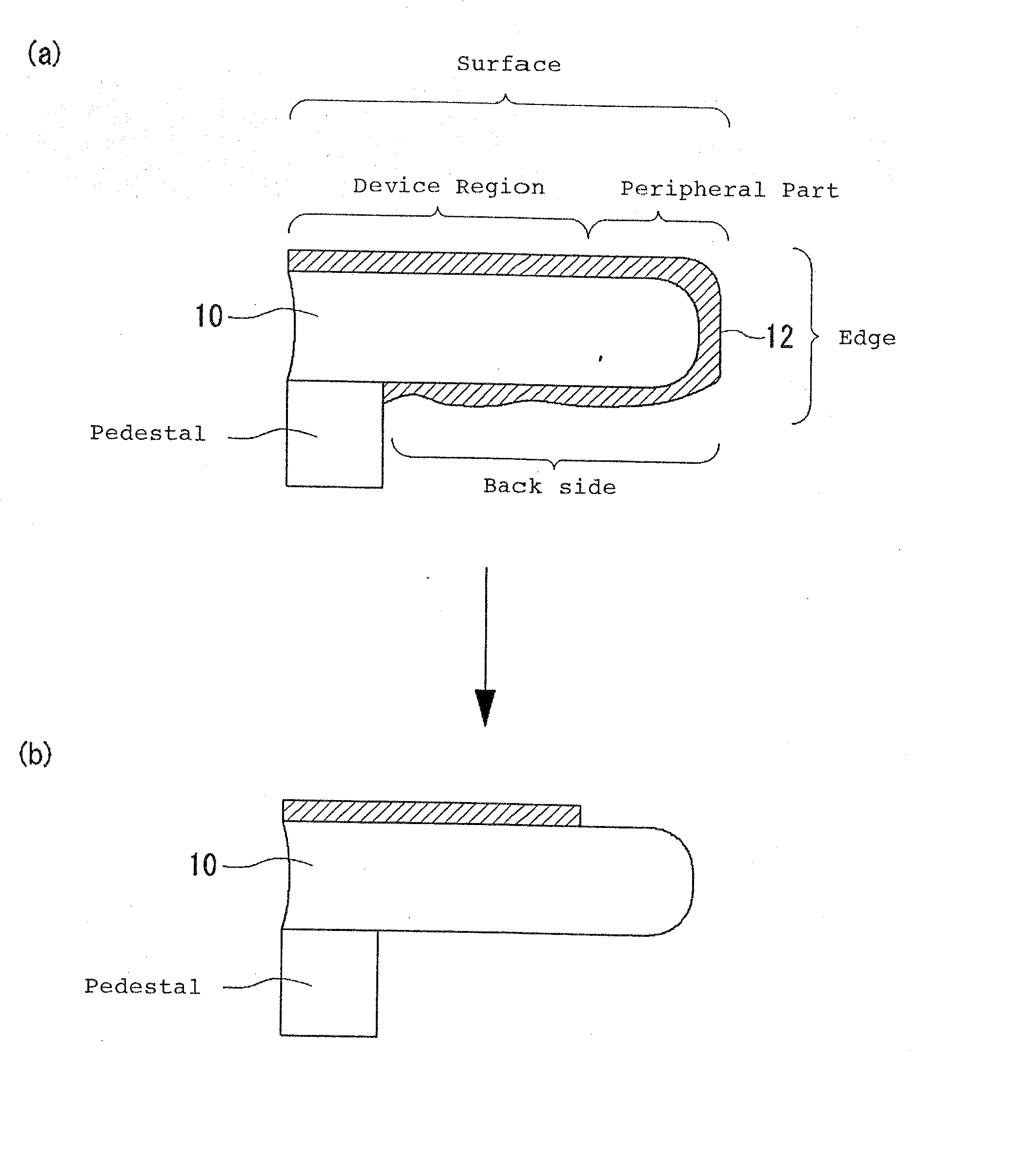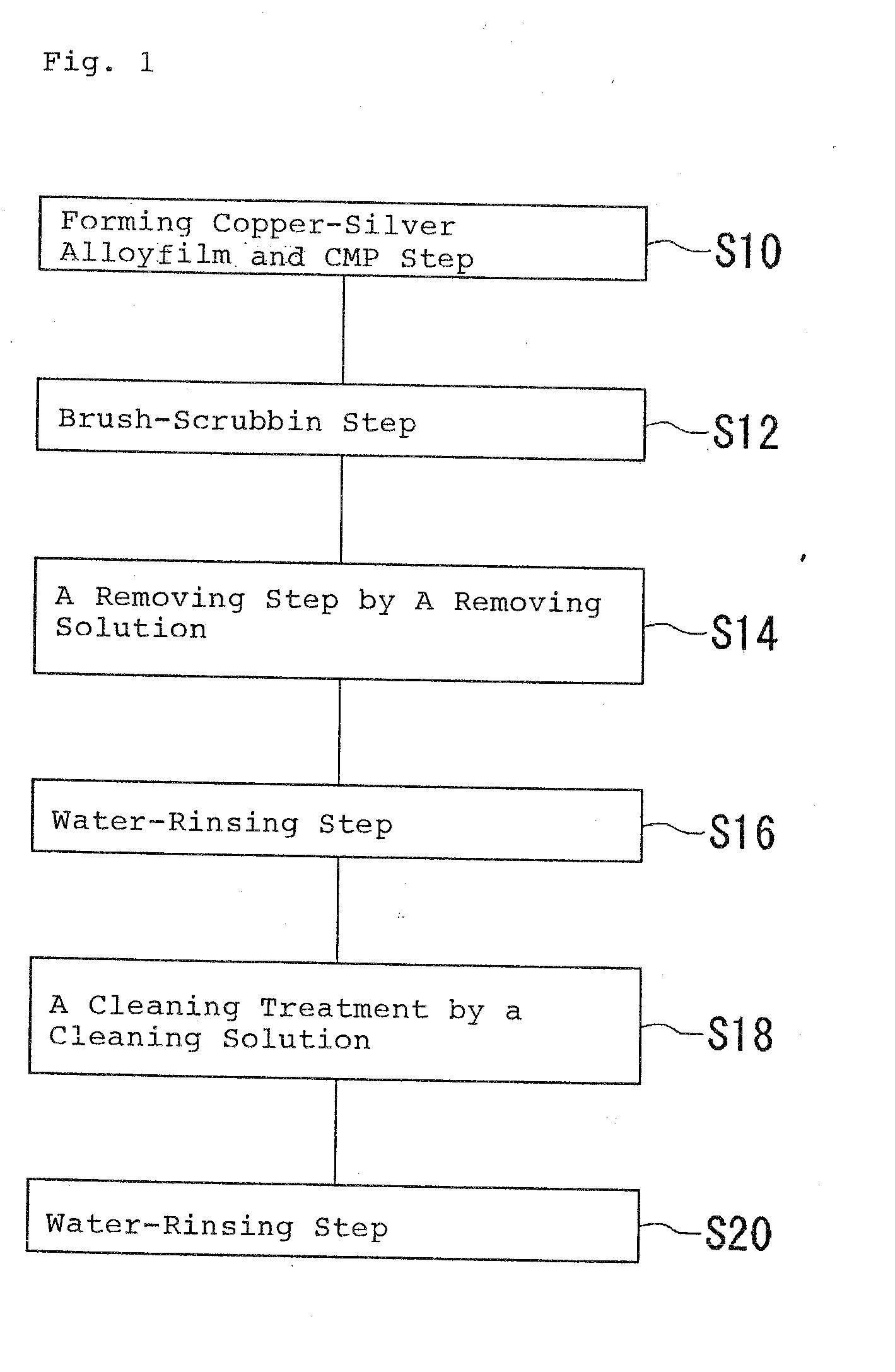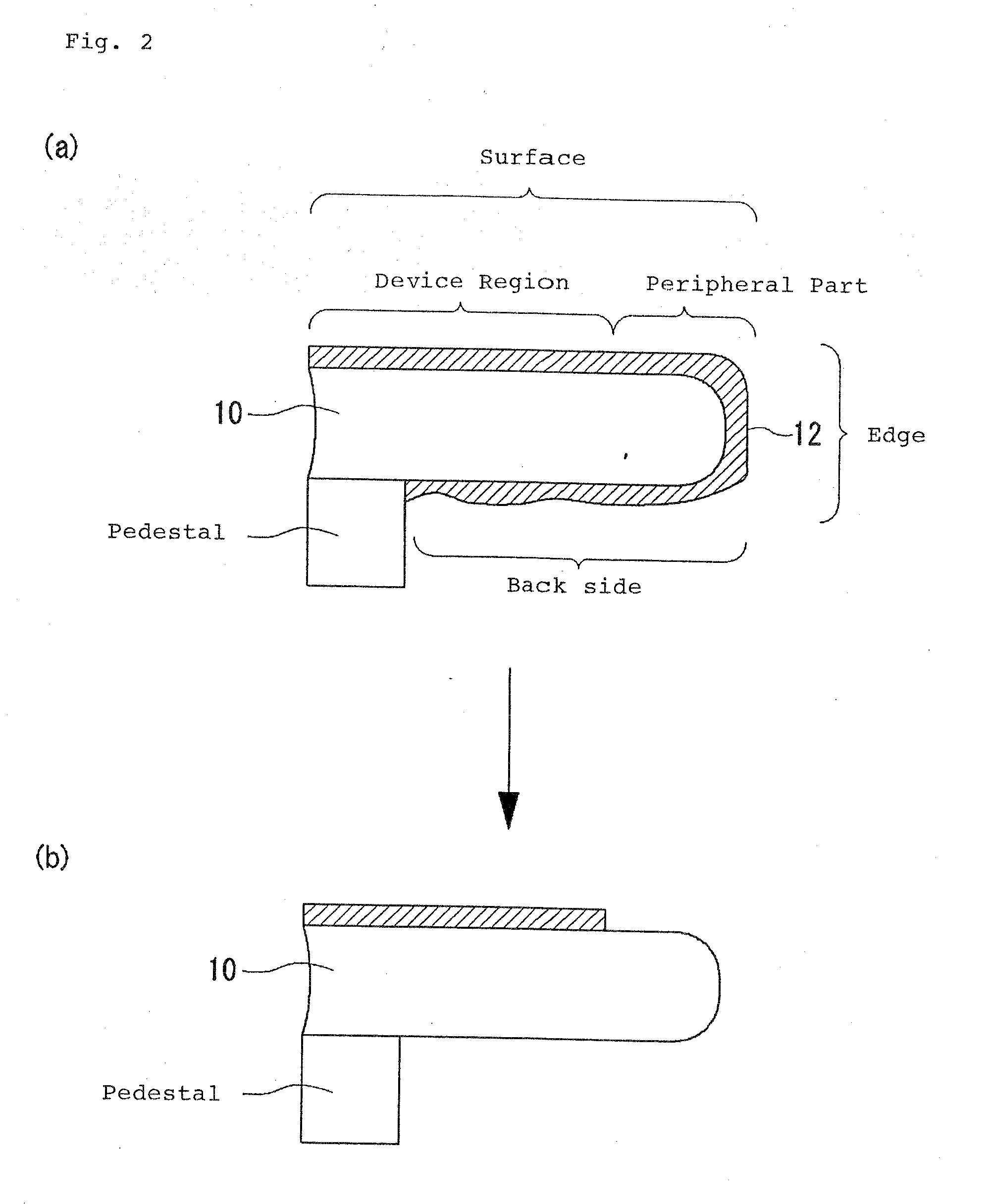Removing solution, cleaning method for semiconductor substrate, and process for production of semiconductor device
a cleaning method and technology for semiconductor substrates, applied in detergent compounding agents, manufacturing tools, inorganic non-surface active detergent compositions, etc., can solve problems such as damage to device reliability, and achieve the effect of preventing readhesion of removed metal contaminants and excellent ability for removal of metal contaminants
- Summary
- Abstract
- Description
- Claims
- Application Information
AI Technical Summary
Benefits of technology
Problems solved by technology
Method used
Image
Examples
reference example 1
[0073] A sample was spin-washed for 30 seconds using various removing solutions. In this Reference Example, removing solutions containing nitric acid were used. The compositions of the removing solutions used are shown in Table 2. The amounts of copper contaminant and silver contaminant remaining on a semiconductor substrate after the removing treatment were measured by fluorescent X-ray analysis. The results are shown also in Table 2. As shown in Table 1, the etching rates of copper and silver by nitric acid (70% by mass) are relatively high at 1 μm / min or more. That is, nitric acid (70% by mass) can dissolve the copper or silver layer formed in a process for semiconductor device production. Nevertheless, the removing solutions having compositions shown in Table 2 were unable to remove copper or silver.
TABLE 2×1010 atoms / cm2AgCuRemoving solutioncontaminationcontaminationBefore cleaning4329710951(a) HNO3 (1.4%)5921829(b) HNO3 (7%)5461764(c) HNO3 (20%)1505325(d) HNO3 (35%)406821(e)...
reference example 2
[0074] A sample was spin-washed for 30 seconds using various removing solutions. In this Reference Example, removing solutions containing sulfuric acid were used. The compositions of the removing solutions used are shown in Table 3. The amounts of copper contaminant and silver contaminant remaining on a semiconductor substrate after the removing treatment were measured by fluorescent X-ray analysis. The results are shown also in Table 3. Copper could not be removed with the removing solutions having compositions shown in Table 3, other than those shown in (i) and (k); and silver could not be removed with any removing solution.
TABLE 3×1010 atoms / cm2AgCuRemoving solutioncontaminationcontaminationBefore washing4329710951(h) H2SO4:H2O = 2:50649614(i) H2SO4:H2O2:H2O = 2:1:50564ND(j) H2SO4:H2O2:HF:H2O = 2:1:1:5037320117(k) H2SO4:H2O2:HF:H2O = 2:1:1:101253ND
reference example 3
[0075] A sample was spin-washed for 30 seconds using various removing solutions. In this Reference Example, removing solutions containing hydrofluoric acid were used. The compositions of the removing solutions used are shown in Table 4. The amounts of copper contaminant and silver contaminant remaining on a semiconductor substrate after the removing treatment were measured by fluorescent X-ray analysis. The results are shown also in Table 4. Copper could not be removed with the removing solutions having compositions shown in Table 4, other than that shown in (n); and silver could not be removed with any removing solution.
TABLE 4×1010 atoms / cm2AgCuRemoving solutioncontaminationcontaminationBefore washing4329710951(l)HF:HNO3:H2O = 1:5:2054918202(m) HF:H2O2:H2O = 1:5:100 (FPM)51010→ HF:HNO3:H2O = 1:5:20(n) HF:H2O2:H2O = 1:5:100 (FPM)2340ND
PUM
| Property | Measurement | Unit |
|---|---|---|
| temperature | aaaaa | aaaaa |
| resistivity | aaaaa | aaaaa |
| temperature | aaaaa | aaaaa |
Abstract
Description
Claims
Application Information
 Login to View More
Login to View More - R&D
- Intellectual Property
- Life Sciences
- Materials
- Tech Scout
- Unparalleled Data Quality
- Higher Quality Content
- 60% Fewer Hallucinations
Browse by: Latest US Patents, China's latest patents, Technical Efficacy Thesaurus, Application Domain, Technology Topic, Popular Technical Reports.
© 2025 PatSnap. All rights reserved.Legal|Privacy policy|Modern Slavery Act Transparency Statement|Sitemap|About US| Contact US: help@patsnap.com



